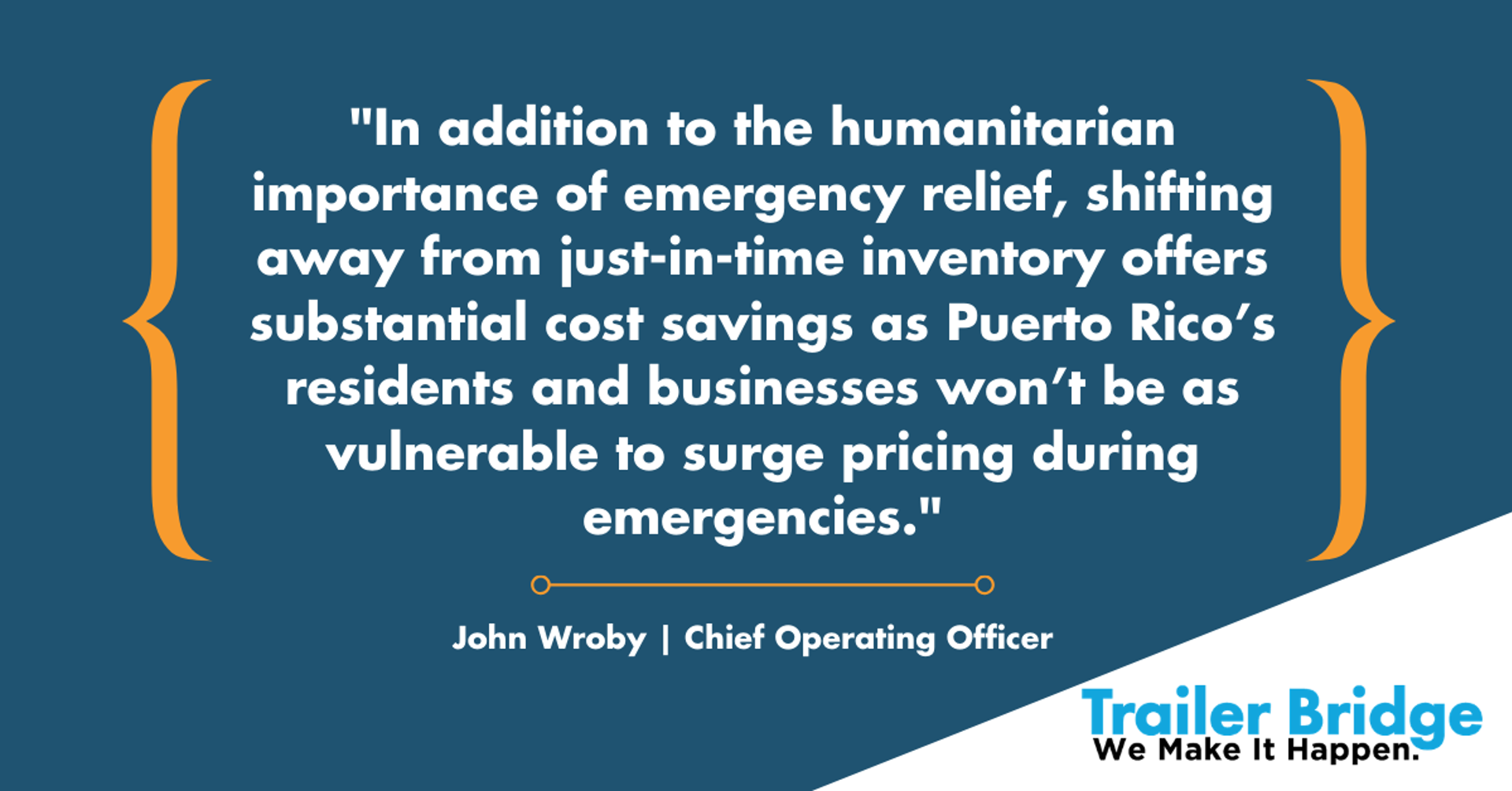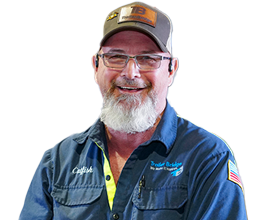
How Four Supply Chain Trends Are Shaping Puerto Rico’s Future
by John Wroby, Chief Operating Officer
This article originally appeared in JOC.com
Time and time again, Puerto Rico has proven its resilience following natural disasters, economic upset, political turmoil, and more. How the island will fare post-pandemic and how we can support its recovery were hot topics at two recent discussions I was privileged to participate in.
In one, Jacksonville Port Authority (JAXPORT), the number one U.S. port for commercial trade with Puerto Rico, hosted a roundtable between its leadership, industry delegates like myself, and US Department of Labor Secretary Eugene Scalia in which we discussed reopening the economy and the supply chain between Puerto Rico and mainland USA.
The second roundtable discussion was an informative talk with U.S. Coast Guard Rear Admiral Peter J. Brown, hosted by the Coast Guard Sector Jacksonville. As President Trump’s Special Representative for Puerto Rico’s disaster recovery efforts, Admiral Brown coordinates the United States Government’s efforts to rebuild Puerto Rico’s infrastructure.
In both talks, it was clear that an issue as complex and wide-ranging as the Coronavirus pandemic will take government and industry working together to solve. Beginning from a shared place of desire to strengthen Puerto Rico’s supply chain and economy for the future, how can we work together to support those ends?
Let’s consider 4 main issues shaping the future for Puerto Rico, and how upcoming legislation and stimulus efforts may help support stronger transportation, manufacturing, and the economy as a whole.
1. Labor Supply and Getting the Transportation Industry Back to Work
Employers are finding that stevedores (dockworkers) who were laid off or temporarily furloughed may not want to come back right away. It is understandable that as government workers were forced to suddenly adapt to lockdown and remote work, tiered unemployment benefits would likely have required too much administration. The initial disbursements were the same for all workers.
At this stage, however, the question becomes: How do we get stevedores and other supply chain workers to return when they are receiving more or only slightly less than their unemployment benefits? Many have concerns about pandemic safety and will take reduced pay as a method of limiting potential exposure to Coronavirus.
Returning to work could be incentivized by tiered unemployment assistance payments or other back-to-work supports. The inclusion of these measures in any stimulus bills passed will almost certainly support transportation companies doing business in Puerto Rico, as well as nationwide.
2. Reshoring Manufacturing back to the United States
COVID-19 highlighted significant disadvantages of offshoring manufacturing to Asian markets as we have experienced supply shortages of much-needed PPE throughout this crisis. The need to shorten the supply chain for many items, particularly food and essential medical supplies, has become crystal clear.
Puerto Rico already produces 10% of the pharmaceuticals made in the U.S., more than any other single location. If the goal of any piece of incoming legislation is to increase domestic pharmaceutical production to reduce dependence on Chinese manufacturing, Puerto Rico stands to gain immensely. Previous tax breaks to corporations as a result of Section 936, an internal revenue service tax code, enabled short-term job gains and economic growth for some time in Puerto Rico. However, Section 936 failed to provide long-term fiscal stability and there is therefore not much appetite for reviving it.
Could there be legislation introduced in Phase Four stimulus efforts that would benefit manufacturing in Puerto Rico? If so, it would benefit the United States as a whole by helping to achieve that goal of a tighter supply chain for critical goods.
3. The Release of FEMA and HUD Relief Funds
Speeding up the disbursement of outstanding FEMA (Federal Emergency Management Agency) and HUD (The Department of Housing and Urban Development) disaster relief funding is critical in a post-COVID Puerto Rico. Some funds are on hold as part of a third-party review process and will be released when Puerto Rico meets a series of conditions.
Working to make the R3 Program more expedient and successful must be a priority as we look to reshore manufacturing. Employees need safe, secure, affordable housing and access to schools, hospitals, and other services if they are to succeed in their roles at work.
The government could help facilitate the fund payments, which will help Puerto Rico rebuild and put it in a position to host more manufacturing for the USA.
4. Proactive U.S. Military Presence and Planning
Historically, the U.S. Army has had a limited presence on the island. Now, the military wants to be able to monitor and respond more quickly to issues and is working to increase the stock of key supplies there. In addition to the humanitarian importance of emergency relief, shifting away from just-in-time inventory offers substantial cost savings as Puerto Rico’s residents and businesses won’t be as vulnerable to surge pricing during emergencies.
In our roundtable meeting, we learned that FEMA has positioned 6-7X more hurricane supplies on the island than in 2017 before Hurricane Maria. Continuing in this vein supports Puerto Rico’s people and industry in this next phase of its recovery and economic growth and, as we’ve discussed, builds security into the North American PPE supply chain.
Coordination between our government, manufacturing and transportation industry stakeholders is needed now more than ever, as Puerto Rico’s importance to the U.S. supply chain becomes clearer. We have an opportunity to strengthen our economic position and support future pandemic and natural disaster recovery efforts by standing together for a stronger Puerto Rico. In the coming weeks and months, stimulus and legislative decisions must take this into account.




